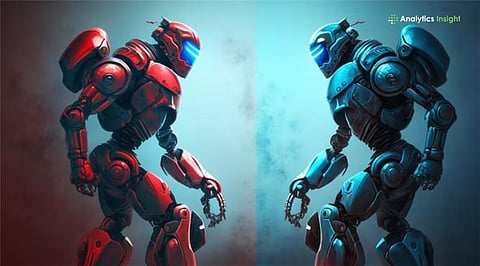

Amazon has made a significant leap in robotics by launching Vulcan. It is a touch-sensitive robot that can work with humans in warehouse environments. The robot was unveiled at the ‘Delivering the Future’ event in Dortmund, Germany. Vulcan is designed to perform sensitive tasks with accuracy, something that was only achievable by human hands before.
In contrast to traditional industrial robots, Vulcan has AI-driven force feedback sensors. This new tech enables the Amazon robot to recognize contact and regulate grip strength in real-time. This development stops damage or mishandling. It also enhances employee safety by preventing accidental collisions.
"The standard robot is numb and dumb," stated Aaron Parness, Amazon's Director of Applied Science. Parness further explained, "Vulcan represents a massive step forward in robotics. It's not merely viewing the world, it's experiencing it."
The robot's ‘hand’ takes the form of a ruler on a hair straightener, mounted with sensors that replicate human touch. This helps Vulcan in reorganizing items within bins. Thus, better utilizing space and makes room for new inventory.
Emphasizing the robot’s utility, Parness told CNBC, "Vulcan complements our employees and together they do a better job than either separately.” The robot further seeks to optimize ergonomics. It is designed to lower in-workplace accidents, which is a huge challenge in logistics-laden environments.
In capability, Vulcan is the opposite of other humanoid robots such as Tesla's Optimus. The latter is geared towards general-purpose mobility and can walk, climb stairs, and manipulate a range of objects. While Optimus uses full bipedal walking, Amazon's Vulcan is specialized and is designed for high-precision work in a stationary warehouse setting.
Robots now account for 75% of customer orders fulfilled at Amazon. However, rather than reducing jobs, automation has created hundreds of new opportunities. For example, robotic floor monitors and on-site maintenance engineers. Amazon's Vulcan is a good sign that the next generation of robots will be collaborative, smart, and more human in their touch.
